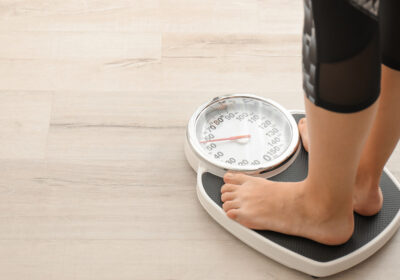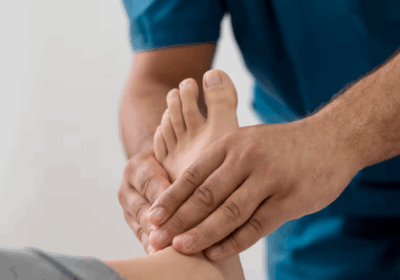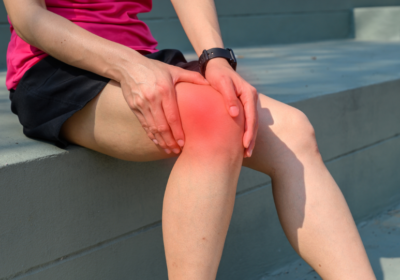Ayurvedic Treatment For Anal Fissure In Kerala
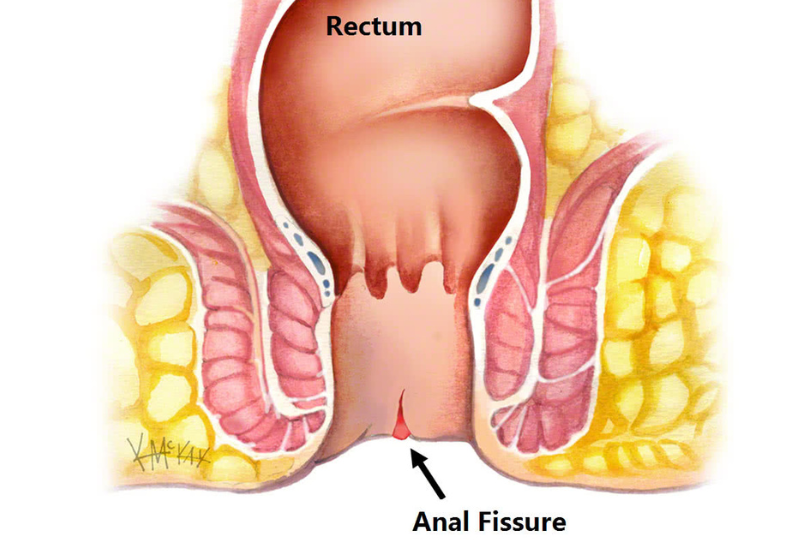
In Ayurveda, Anal fissure is described by the term parikartika.
MAURYA AYURVEDA is renowned for its expertise in ayurvedic care of Anal fissures {A small tear in the lining of the anus} using oral meditation, agni karma, and kshara karma techniques. Patients with anal fissures are identified and treated here under the supervision of well-known Ayurvedic doctors.
In Ayurveda, the treatment for anal fissures typically involves a combination of dietary modifications, lifestyle changes, topical applications, and herbal remedies. Here are some common Ayurvedic approaches to treating fissures:
Herbal Remedies for Anal fissure:
-
Triphala Churna: त्रिफला चूर्ण
Triphala is a combination of three fruits: Amla (Emblica officinalis), Haritaki (Terminalia chebula), and Bibhitaki (Terminalia bellirica). It helps in relieving constipation, which can aggravate fissures.
-
Arshoghni Vati: अर्शोघ्नि वटी
This herbal tablet is effective in treating hemorrhoids and anal fissures. It contains ingredients like Haritaki, Neem (Azadirachta indica), and Shuddha Tankan (Purified Borax), which help in reducing inflammation and promoting healing.
-
Abhayarishta: अभयारिष्ट
Abhayarishta is a liquid Ayurvedic medicine that contains ingredients like Haritaki, Trivrit (Operculina turpethum), Vidanga (Embelia ribes), and Dhataki (Woodfordia fruticosa). It helps in relieving constipation and promotes bowel movements, thereby reducing the strain during defecation.
Best 2 Topical Applications for Anal fissure:
Ayurvedic practitioners may recommend applying herbal ointments or oils to the affected area to reduce pain, inflammation, and promote healing. Commonly used herbs include aloe vera, coconut oil, sesame oil, and triphala (a combination of three fruits).
-
Jatyadi Ghrita: जात्यादि घृत
This medicated ghee is used topically for wound healing and is beneficial in the management of anal fissures. Ingredients may include Jati (Jasminum sambac), Neem (Azadirachta indica), and Haridra (Turmeric).
-
Kasisadi Taila: कासिसादि तैल
It’s an herbal oil used externally for local application in conditions like fissures. Ingredients may include Kasisa (Ferrous sulphate), Shuddha Parad (Purified Mercury), Shuddha Gandhaka (Purified Sulphur), and Nimba (Neem) Patra Swarasa (leaf juice).
Ayurvedic Procedures:
Sitz Bath:

This involves sitting in a tub or basin filled with warm water. Adding medicinal herbs like Triphala (a combination of three fruits: Amla, Haritaki, and Bibhitaki) or Neem leaves to the water can enhance its therapeutic effect. Sitz baths help to soothe the anal area, reduce inflammation, and relieve pain associated with fissures.
Kshara Sutra Therapy:
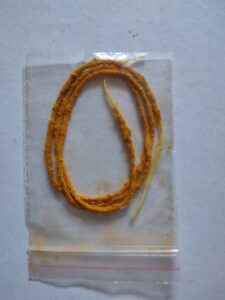
Kshara Sutra is a medicated thread prepared by soaking it in herbal alkaline solutions. It is inserted into the fistula tract or fissure, and over time, it helps in cutting and healing the tissues. Kshara Sutra therapy is often recommended for complex or chronic fissures.
Agni karma:
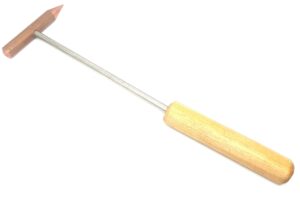
Agni karma, also known as cauterization therapy, is a traditional Ayurvedic treatment method that involves the use of heat to treat various conditions, including fissures in ano (anal fissures). Here’s how it generally works for anal fissures.
Procedure: Agni karma involves applying heat directly to the affected area (in this case, the anal fissure) using a heated metal rod or a specialized tool. The heat helps in burning and sealing the tissues, which promotes healing.
- Purpose: The primary goal of agni karma in treating fissures in ano is to promote healing by stimulating blood flow to the area and creating a controlled inflammatory response that aids in tissue repair.
- Application: The procedure is usually performed by our trained Ayurvedic practitioners who have experience in agni karma techniques. They apply the heated instrument to the fissure site for a short period, ensuring that the heat is sufficient to achieve therapeutic effects without causing damage.
- Post-treatment: After agni karma, patients may experience some discomfort or mild pain, which is usually managed with appropriate Ayurvedic medications or remedies prescribed by the practitioner. It’s essential to follow post-treatment care instructions to optimize healing and prevent complications.
- Effectiveness: Agni karma is believed to be effective in promoting healing of anal fissures by encouraging the formation of healthy tissue and reducing symptoms such as pain and bleeding associated with fissures.
Basti (Enema Therapy):
Basti therapy involves the administration of medicated enemas using herbal decoctions, oils, or ghee. For Anal fissures, particularly those associated with constipation, an oil-based enema (Anuvasana Basti) may be beneficial. Basti therapy helps in lubricating the colon, promoting bowel movements, and reducing anal discomfort.
Kshara Karma:
Applying Kshara Karma once a week typically results in the fissure healing in three to four sittings. Here certain medications are applied over the fissure and promote healing.
Dietary Modification
Anal fissure can be quite uncomfortable, but dietary changes can help alleviate symptoms and promote healing. Here are some dietary recommendations that may help:
- Increase Fiber Intake: Eating foods high in fiber can help soften stools and make bowel movements easier, reducing the risk of further irritation to the anal area. Good sources of fiber include fruits, vegetables, whole grains, legumes, and nuts.
- Stay Hydrated: Drink plenty of water throughout the day to keep stools soft and easy to pass. Aim for at least 8 glasses of water a day, or more if you’re physically active or in a hot climate.
- Limit Constipating Foods: Avoid foods that can contribute to constipation, such as processed foods, red meat, dairy products, and foods high in fat. These can make stools harder and more difficult to pass, exacerbating the fissure.
- Include Probiotics: Probiotics can help regulate bowel movements and promote gut health, which may aid in preventing constipation. Yogurt, kefir, sauerkraut, and other fermented foods are good sources of probiotics.
- Avoid Spicy Foods and Irritants: Spicy foods, caffeine, alcohol, and citrus fruits can irritate the digestive tract and worsen symptoms. Try to limit or avoid these foods until the fissure has healed.
- Eat Small, Frequent Meals: Eating smaller, more frequent meals throughout the day can help regulate bowel movements and prevent straining during bowel movements.
- Consider Supplements: In some cases, fiber supplements such as psyllium husk or methylcellulose may be recommended to help increase fiber intake and soften stools.
- Monitor Bowel Movements: Pay attention to your bowel movements and make note of any foods that seem to worsen symptoms. Everyone’s body is different, so it’s important to find what works best for you.
Lifestyle Changes:
Practicing proper hygiene, especially after bowel movements, is essential to prevent infection and further irritation. Ayurveda recommends gentle cleansing with warm water instead of harsh toilet paper. Avoiding straining during bowel movements and sitting for long periods on the toilet can also help reduce pressure on the anal area.
Yoga:
Yoga can be beneficial for promoting overall well-being and relieving symptoms associated with conditions like fissures in ano.
Here are some yoga asanas (poses) that helps alleviate discomfort associated with fissures:
-
Balasana:
This gentle stretch can help relax the muscles in the lower back and hips, potentially easing discomfort.
-
Marjaryasana-Bitilasana:
This dynamic movement helps to gently flex and extend the spine, promoting flexibility and relieving tension in the lower back.
-
Setu Bandhasana:
Bridge pose can help strengthen the muscles of the lower back and glutes, which may provide support and alleviate discomfort.
-
Paschimottanasana:
This pose can help stretch the muscles of the lower back and hamstrings, potentially reducing tension in the pelvic area.
-
Supta Matsyendrasana:
This twist helps to gently massage the abdominal organs and may promote digestion and relieve discomfort in the pelvic region.
-
Pavanamuktasana:
This pose involves hugging the knees to the chest, which can help relieve gas and bloating and may alleviate discomfort in the abdominal area.
-
Savasana:
This final relaxation pose allows the body to fully relax and can be beneficial for reducing stress and promoting overall well-being.
DISCLAIMER: The information provided in this article is intended solely for educational purposes. Treatment decisions should be made exclusively by a well-qualified Ayurvedic physician. Self-medication is strongly discouraged.


